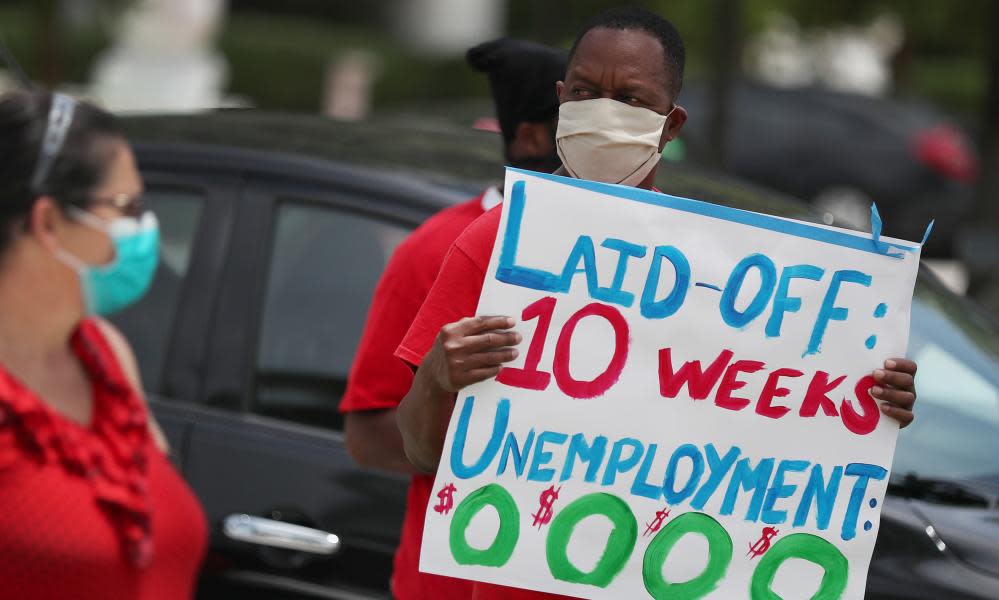US job losses pass 40m as coronavirus crisis sees claims rise 2.1m in a week

The number of Americans who have lost their jobs in the past 10 weeks soared to more than 40 million as the number of unemployment claims continued to rise with 2.1 million people filing for unemployment last week.
Related: US unemployment rises by 2.4m despite easing of coronavirus lockdowns
The staggering job losses mark a grim milestone in the economic crisis that has gripped the US since the coronavirus triggered widespread shutdowns and stay-at-home orders in an effort to halt the spread of the deadly pandemic.
The latest figures from the Department of Labor show that the rate of new unemployment claims has continued to fall over the last few weeks, down from its peak in early April, when 6.6 million Americans filed for unemployment in a single week.
Earlier this month, the department reported that more than 20 million Americans lost their jobs in April, bringing the unemployment rate to 14.7%, up from 4.4% in March.
While the growth of unemployment claims has slowed, millions more have continued to file for unemployment each week, bringing the total number of unemployed to a disastrous rate not seen since the Great Depression.
Job losses have hit virtually every industry, though some harder than others. Figures from the Department of Labor earlier this month showed the leisure and hospitality industry was the hardest-hit, with 4.8 million jobs lost – nearly a 40% unemployment rate – as traveling came to a halt with shutdown measures. Millions of education and health services, retail and manufacturing jobs were also cut.
Even months after shutdown orders were put in place, the reported unemployment figures may not show a complete picture of how many people were laid off due to the crisis.
Many states are still trying to work through backlogs of thousands of applications as antiquated online systems struggle to keep up with the number of applicants. Oregon, for example, announced this week that it is still trying to process 38,000 unemployment claims. At the end of April, only a third of claims in Hawaii, a state that relies heavily on its tourism industry, had been processed.
After Jazz Salm was laid off from her job as a server at Chile’s, she immediately got onto Florida’s unemployment system to file her claim. It took her about a week to get through the system since the website kept crashing. When she was finally able to submit her claim, it took another month until she started receiving payments.
During that month, Salm, who lives in Sarasota, had no idea what the status of her application was. Having just used her savings to move in February, Salm was left without money to pay her bills or even buy groceries until payments came in.
“I think the government just needs to realize that we just want to be heard,” Salm said. “It all comes down to acknowledgement that us little people – you know, what are we supposed to do? We’re stuck.”
Over the last few weeks, all 50 states have begun some type of reopening measures, bringing hope that the economy will revive as people start going back to work. But it is unclear what effect the measures have had on unemployment.
The majority of the 20 million Americans – about 78% – who filed for unemployment in April indicated they were temporarily laid off, meaning they expected to be called back to their jobs after the pandemic.
But many businesses that have reopened are operating with far-from-normal procedures, like social distancing in dine-in restaurants and movie theaters, that mean foot traffic is still down compared with pre-shutdown times. Many local businesses have had to shutter permanently, probably leaving tens of thousands of Americans unemployed indefinitely.

